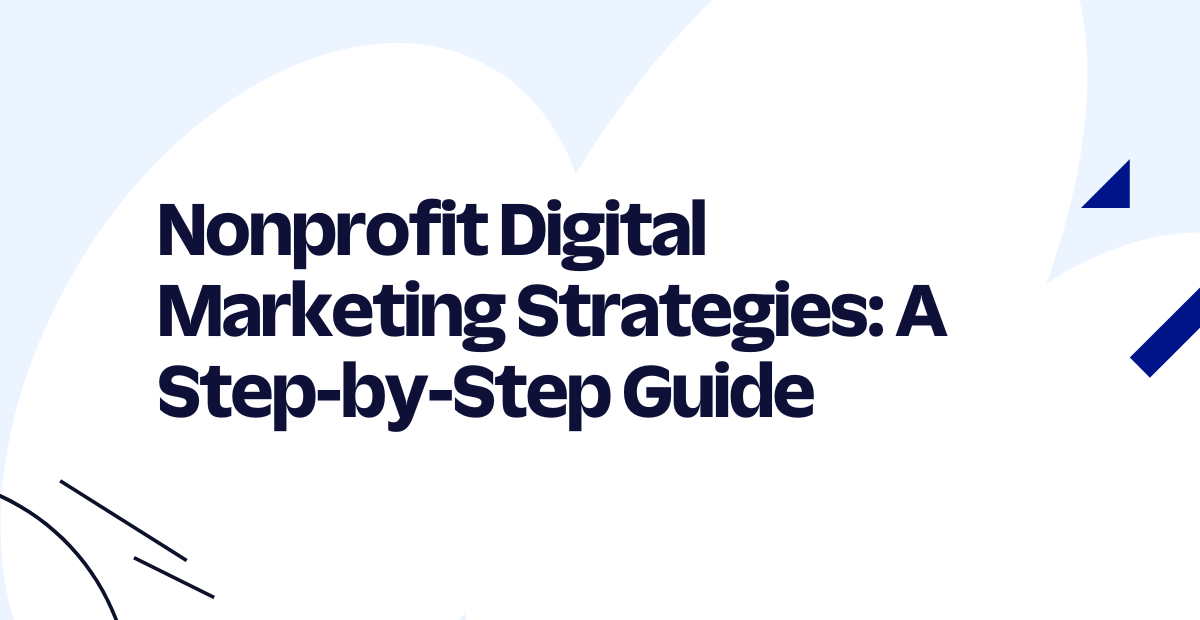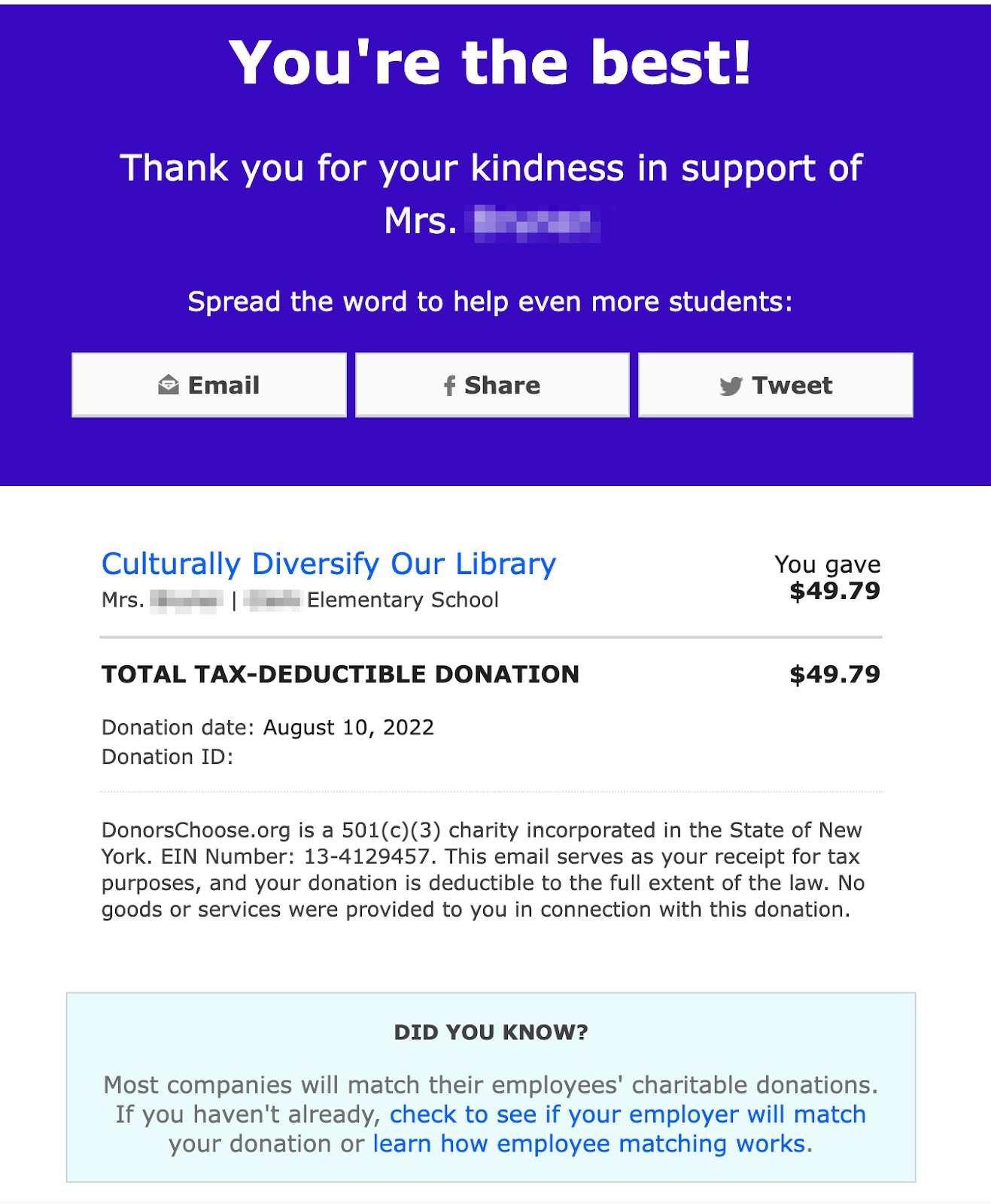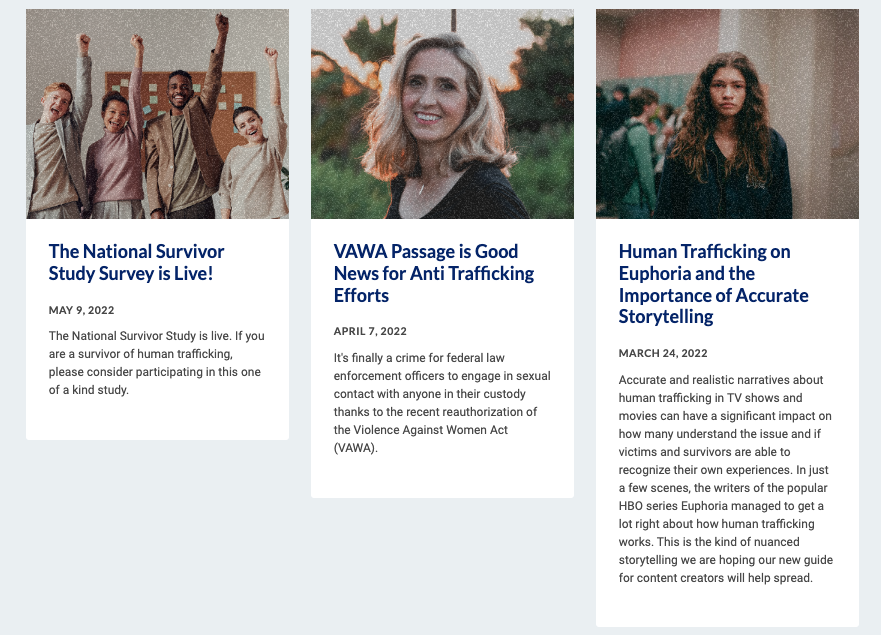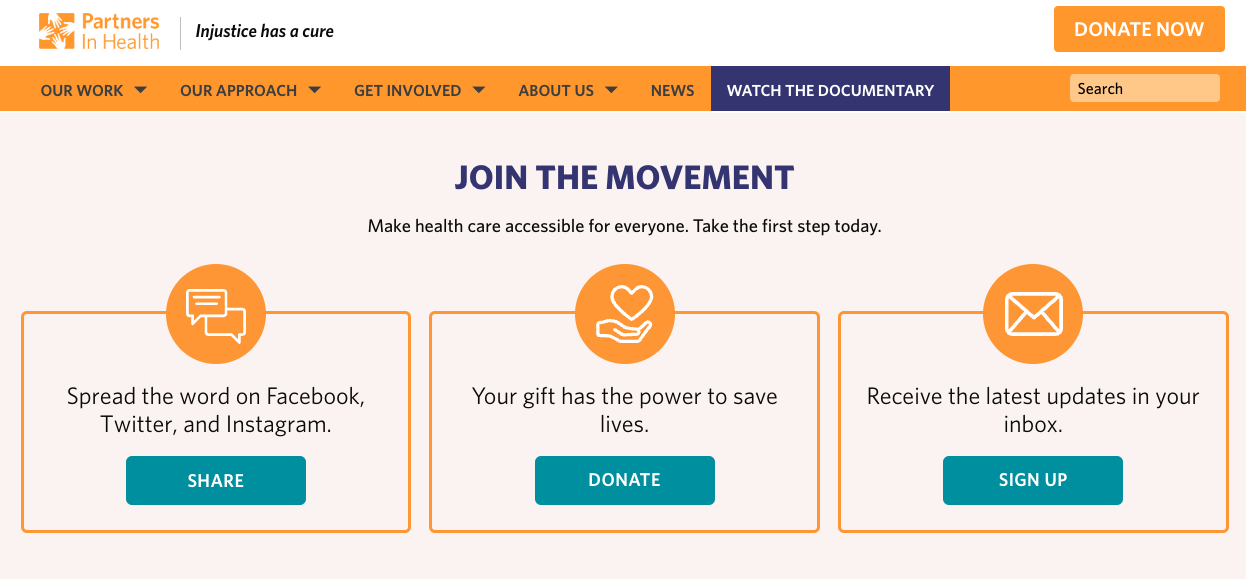Nonprofit Digital Marketing Strategies: A Step-by-Step Guide
Time to read:

A strategic online presence is vital for a nonprofit organization to connect with participants, donors, and volunteers. Your organization has probably already ventured into digital platforms, such as a website, email newsletter, or social media profiles. But to reap all the benefits of digital channels, you need a unified strategy for your marketing efforts.
Because nonprofit organizations often operate with small teams and tight budgets, planning and executing a marketing strategy can be challenging. This post provides step-by-step guidance on how to create your nonprofit digital marketing plan and an overview of the digital strategies that will help you reach a broader audience.
Plus, we’ll cover how Twilio.org’s Impact Access Program can assist your nonprofit’s digital communications.
First, let’s start with why you need a digital marketing strategy for your nonprofit organization.
How can a digital marketing strategy benefit nonprofits?
While much of a nonprofit organization’s work takes place physically in the communities it serves, digital channels are often the first point of contact with people who want to learn about an organization or cause. Having a unified strategy for these channels will help you reach new audiences and provide a consistent experience wherever you connect with potential donors, participants, and volunteers.
And it goes beyond the first point of contact—more and more nonprofits now offer full programming through digital channels, allowing them to serve more people and meet participants on their preferred channels.
According to our State of Nonprofit Digital Engagement Report (SONDER), 89% of nonprofits say digital communications are critical to achieving their mission, but many of these respondents admit to not using digital channels to their full potential. In fact, 75% of nonprofits say their program participants want them to provide more digital communication options.
Additionally, 70% of participants say digital communications help them become aware of nonprofit services and programs, but only 33% of them report that nonprofits use digital communications to this end.
So if you’re looking to grow your digital presence, you’re not alone. A great place to start is by putting together a digital marketing strategy. This will help you:
- Raise awareness of your mission and impact
- Reach potential program participants who could benefit from your services
- Recruit volunteers interested in helping with your cause
- Drive donations and memberships
Ready to get started? Let’s dive into the steps to create your nonprofit marketing plan.
How to craft your nonprofit digital marketing strategy
It can be tempting to start publishing content or engaging on digital platforms right away, but before you begin, follow these steps to create your nonprofit marketing strategy.
1. Define your marketing goals
Like all good strategies, the first step to create a digital marketing strategy is to define your goals. For example, you may want to boost awareness of your nonprofit in the communities you serve, reach new supporters and volunteers, or increase online donations.
Once you have the broader goals in mind, turn them into measurable goals. For example, if your overarching goal is to create awareness, you can set the measurable goal of increasing your social media follower count by 30% by the end of the year.
The SMART goals framework is a popular starting point for goal setting. SMART stands for specific, measurable, achievable, relevant, and time-bound. This framework invites you to ask yourself crucial questions, like what obstacles you may encounter and how you’ll define success.
2. Understand and segment your audience
Getting to know your target audience allows you to focus on their preferred channels and tailor your messaging to ensure it resonates. It also helps you segment your audience by demographics, such as age and location.
Why do you need to get this granular with your audience? Here’s an example: Our SONDER report found that Baby Boomers and Gen X prefer to communicate over email at a higher rate than Millenials and Gen Z. So knowing the age ranges of your target audiences will help you focus on the channels that will have the most impact.
For a nonprofit organization, you’ll also need to segment audiences into donors, volunteers, and program participants because each of these will require different types of messaging and outreach. Think through the key challenges these audiences face and how your organization can support them, and tailor your outreach accordingly.
And that’s just the start. You can harness your customer data to create detailed personas, personalize your communications, and develop more compelling content for each audience.
3. Choose your key platforms and tools
Once you have an understanding of your audiences, you can narrow down the key platforms to focus on. While you may want to expand your digital presence down the line, start with a few platforms that your audience will likely engage with, such as email, short message service (SMS), and social media.
Each platform will require certain tools to streamline and automate communications. For example, if you choose the three platforms mentioned above, you’ll need the following tools:
- Email: An email service provider, such as Twilio SendGrid, that allows you to design and automate email campaigns and helps ensure that these reach recipients’ inboxes
- SMS: A messaging platform, such as Twilio, that allows you to build a reliable, scalable solution to reach customers on their preferred channels, like SMS and WhatsApp
- Social media: A social media scheduling tool that allows you to plan out your content and monitor engagement
These low-cost channels are a great place to start to get an idea of what resonates with your audiences before you experiment with paid channels, such as advertising.
Additionally, depending on your teams and resources, you may need marketing tools and templates to create your digital assets. Luckily, there are plenty of free design tools, free email templates, and other affordable options for nonprofits.
During this step, you’ll also get an idea of staffing needs to execute your marketing strategy. Ask yourself, who will manage these platforms? Will you add this to an existing team member’s plate, hire additional staff, or work with a freelancer? The answers to these questions will impact the budget for your digital campaigns.
4. Plan your content
Once you’ve defined your audiences and platforms, you can start creating your content. This could be blog posts, videos, social media posts, SMS campaigns, etc. We’ll go into more detail on content marketing later in this post.
As you plan and create content, keep in mind your audiences and the messaging that’s most likely to resonate with them. While your messaging might be similar across audiences, there will be differences based on whether you’re speaking to potential program participants, volunteers, or new donors.
Your content should strike a balance between being valuable to the audience and encouraging them to take the desired action, such as clicking through to your online donation page or signing up to volunteer with your organization.
Finally, use a content calendar to organize your content for each campaign and align it with your other initiatives, such as in-person fundraising events.
5. Execute, measure, and adjust
The only way to learn what resonates with your audience and drives results for your organization is through trial and error.
Once you start executing your digital marketing campaigns, measure your progress against the goals that you set in step 1 and adjust accordingly. Schedule some checkpoints throughout the year, such as quarterly reviews, to look back at the strategies you’ve implemented and reflect on the performance.
You may find that some content types work better than others, or you might even realize that you should track a different metric. Keep an open mind so you can learn from your campaigns and act on your insights.
Marketing strategies for nonprofits
Now that we’ve gone over how to put together your overarching digital marketing strategy, let’s look at specific strategies for different marketing channels.
Email marketing for nonprofits
Email isn’t just a useful tool to communicate with volunteers and program participants. It’s also one of the marketing channels with the highest return on investment. That’s partly because it puts you directly in touch with people who have expressed interest in your organization by signing up for your email list.
Here are a few ways to make the most of email marketing for your nonprofit organization:
- Set up a welcome series for new subscribers that shares some background on your cause and tells recipients how they can get involved.
- Set up automated transactional emails to thank donors for their support (like in the example below) or to help program participants and volunteers understand next steps after they fill out a form or reach out to your organization through your website.
- Send out a regular newsletter (weekly, monthly, or whatever cadence works best for your organization) where you share valuable content for the reader and updates about your organization’s work and needs. Unlike more sales-focused business or ecommerce newsletters, a nonprofit newsletter is an opportunity to showcase the impact of your work and make the occasional appeal for donations and volunteers.
- Set a preference center where subscribers can choose how often they want to hear from you and the content they’re interested in, such as events, volunteer opportunities, or impact reports. This ensures that you only send content that recipients want, which will keep them more engaged with your emails.
- Promote your newsletter on your website, blog, and social media to grow your email list.

Once you set up the foundation of your email marketing program, you can use personalization to further engage recipients. For instance, nonprofits like Donors Choose and Global Giving tailor the projects they recommend to donors via email based on what those individuals engaged with in the past.
Social media marketing for nonprofits
Social media can be a great way to reach new audiences, but you won’t see much growth if you just post occasionally without a strategy.
Use the insights from your audience research in step 2 to choose the platforms where your audience spends the most time, then create dedicated campaigns. For example, you might create a weekly series where you share a story from a program participant to help illustrate your organization’s impact.
That said, social media is also a good place to experiment with different tactics and formats to find out what works for your organization. Say you post a short video, like this kitten bath time video from the San Diego Humane Society, that gains a lot of traction on Instagram. That’s your sign that you need to create more of this type of content. New social media trends emerge quickly, and it’s important to stay agile.
It can be difficult to gain traction organically on social media, so if you have the budget for it, take advantage of paid tools like boosted posts and social media ads to target specific audiences. You can also work with influencers, or people who have a large audience and care about your mission, to donate their time and space to amplify your work.
SMS marketing for nonprofits
SMS, more commonly known as texting, has one of the highest open rates of all marketing channels. Plus, it allows you to reach audiences right where they already spend a lot of time—their phones. Another benefit is that many people have access to SMS even if they don’t have an internet connection or a smartphone, so it’s an accessible way to connect with program participants.
Organizations can use SMS to send timely updates, promote upcoming events, send appointment reminders, and more. It can also be a useful 2-way communication tool, allowing program participants to easily reach you with concerns or get self-service answers to common questions.
One nonprofit organization taking full advantage of this channel is City Harvest, which uses SMS to send program participants important updates about local food pantries and schedule appointments.
SMS chatbots are another effective way to provide valuable information to your communities in a timely manner without overloading your support teams. For example, in 2020, Save the Children built an informational chatbot to address COVID vaccine questions and concerns via SMS using Twilio’s quick deploy chatbot templates.
Additionally, you can get creative with SMS to create engaging fundraising campaigns that drive results. Learn more about SMS marketing.
Live streaming for nonprofits
During the height of the pandemic, live streaming video became a solace for those with canceled event tickets. And this helped us realize that live streams allow us to connect with wider audiences than in-person events allow.
For a nonprofit organization, live streaming is a valuable channel to connect with potential donors and conduct online fundraisers. And it works—people who watch live video are more likely to take action and become repeat attendees.
Plus, live streams are a great opportunity to partner with artists or influencers who can bring new audiences to your organization. A great example is the Project for Awesome, an annual 48-hour live stream where organizers John and Hank Green raise funds for charities selected by the online community.
When live streaming, take advantage of platform tools like live chat and polls to make your event interactive. Involving the community will get them more engaged, which can drive donations.
Content marketing for nonprofits
Content marketing can take many forms depending on your organization’s work, audience, and resources. But no matter what kind of content you produce—whether it’s blog posts, ebooks, videos, podcasts, or webinars—it’ll benefit your marketing strategy. Well-crafted content can help you:
- Improve your search engine optimization (SEO) by ranking for relevant keywords
- Reach audiences who are searching for your services or want to contribute to your cause
- Establish your organization as an authority in your field
Many of your core audiences will begin their search for the services you provide by entering keywords into a search engine like Google. This is why SEO is so important for any organization (plus, it’s a low-cost way to reach audiences). When producing content, keep in mind the questions your audiences often have and use your expertise to provide the answers. Learn how to do keyword research for your content marketing efforts.
Another benefit of content marketing is that once you create a piece of content, you can repurpose it for a variety of channels. For example, if you publish a video on YouTube, you can post short clips from it on TikTok and Instagram, and share the video in your email newsletter. Or you can turn the most important insights from a blog post or podcast episode into an infographic on Instagram.
Content marketing gives you a lot of room for creativity. Just remember that the content needs to be valuable to the reader by providing important information, impactful stories, or tools and resources. A good example is the Polaris Project blog, where the organization publishes accessible, relevant content that informs readers about human trafficking and provides helpful resources.

Nonprofit website
An organization’s website is one of the first places people go to learn about its mission and how to get involved. The experience for users who land on your website should be consistent with all your digital marketing channels. This means the branding and voice should be aligned. Your website should also be optimized for SEO to ensure it appears in search results for relevant keywords.
Additionally, your website is a great place to promote your other marketing channels. Be sure to include links to your social media platforms and a sign-up form for your email program, like Partners In Health does in the example below.

Finally, It’s crucial to ensure your website is optimized for mobile devices, as many visitors will access it from their smartphones. When creating your website, use responsive design that resizes to fit the visitor’s screen. Learn more about website best practices.
Expand your social impact with Twilio.org
The goal of marketing your nonprofit organization is to amplify its impact, and we can help you achieve that.
Twilio.org can help your social impact organization expand its reach and scale its mission. With Twilio, you can build your first application to implement some of the strategies in this post, such as SMS marketing, and start engaging your audience at no cost with product credits from the Impact Access Program. Read about the program’s benefits and eligibility, and reach out to an expert to learn more about how to get started.
Related Posts
Related Resources
Twilio Docs
From APIs to SDKs to sample apps
API reference documentation, SDKs, helper libraries, quickstarts, and tutorials for your language and platform.
Resource Center
The latest ebooks, industry reports, and webinars
Learn from customer engagement experts to improve your own communication.
Ahoy
Twilio's developer community hub
Best practices, code samples, and inspiration to build communications and digital engagement experiences.


